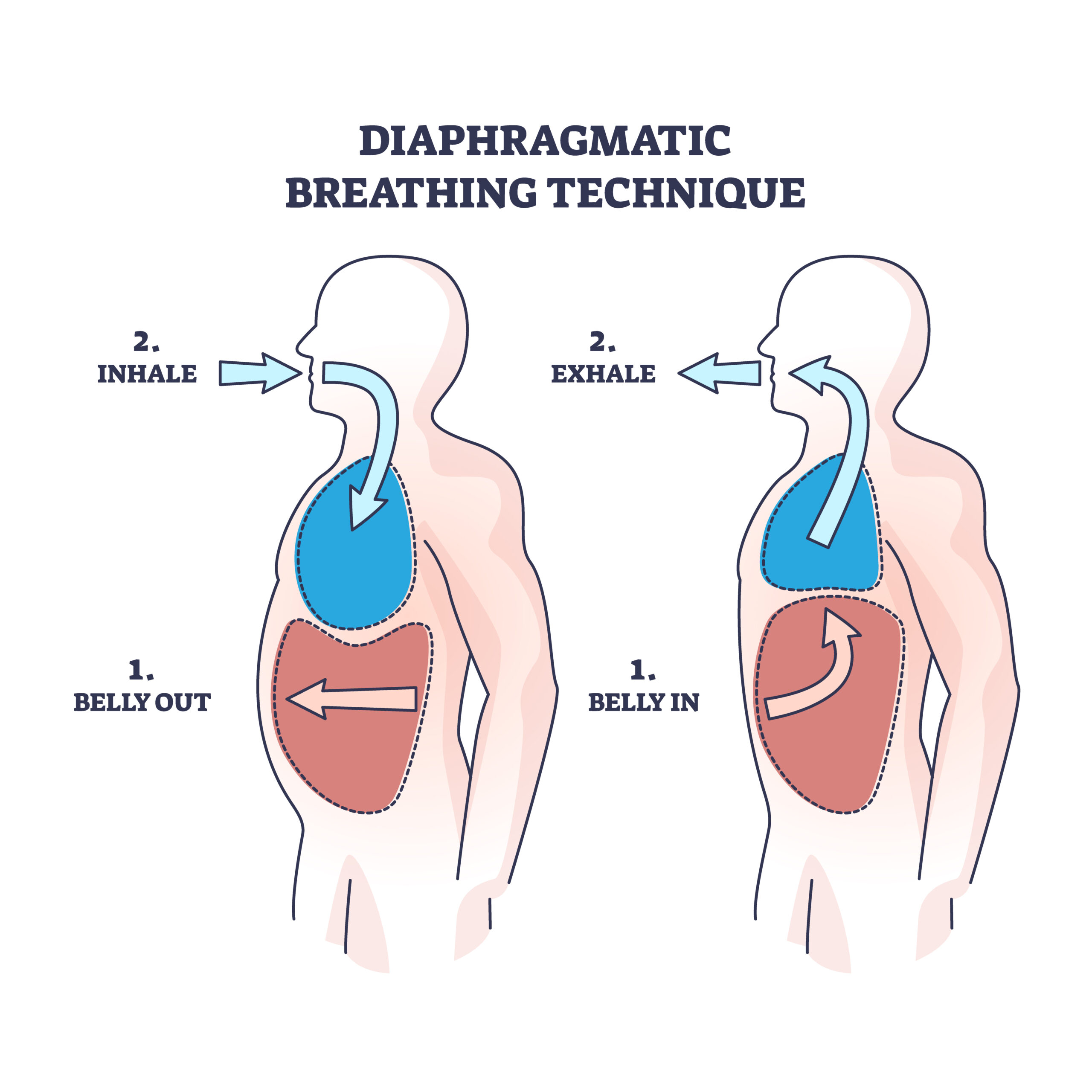Diaphragmatic Breathing Exercises
Diaphragmatic breathing, commonly referred to as deep breathing or abdominal breathing, is a fundamental practice that promotes better respiratory function and overall well-being. This technique emphasizes full engagement of the diaphragm, a large muscle located at the base of the lungs, which is crucial for efficient breathing. Diaphragmatic breathing exercises are not only easy to perform but also come with a host of benefits, from reducing stress and improving lung capacity to aiding in better blood circulation and digestion.
The diaphragm plays a pivotal role in breathing; it contracts and flattens when you inhale, creating a vacuum that pulls air into the lungs. Unlike shallow chest breathing, diaphragmatic breathing encourages full oxygen exchange — the beneficial trade of incoming oxygen for outgoing carbon dioxide. This can not only improve the effectiveness of your breathing but also lower the overall oxygen demand, allowing the body to function more efficiently.
To practice diaphragmatic breathing, one must first become aware of their breathing pattern. This is often done in a quiet place where distractions are minimal. The individual can start by lying on their back on a flat surface with knees bent and head supported, placing one hand on the upper chest and the other just below the rib cage. This allows one to feel the diaphragm move as they breathe. The exercise involves breathing in slowly through the nose so that the stomach moves out against the hand, while the chest remains relatively still. The exhalation should be slow and through pursed lips, ensuring that the hand on the belly descends.
Regular practice of diaphragmatic breathing can lead to numerous health benefits. For one, it is an effective stress reliever. By focusing on deep breathing, the body’s natural relaxation response is triggered, which reduces stress hormones in the bloodstream, relaxes muscle tension, and lowers blood pressure. This physiological shift is a stark contrast to the “fight or flight” response and can be particularly beneficial in managing anxiety, depression, and sleep disorders.
Furthermore, diaphragmatic breathing is particularly beneficial for improving lung function. It can be especially helpful for people with chronic obstructive pulmonary disease (COPD), as it helps them use their diaphragm more efficiently and increases the oxygen levels in their blood. Even for healthy individuals, enhancing lung efficiency can improve stamina and endurance during physical activity.
Diaphragmatic breathing also plays a critical role in core muscle stabilization. It engages the abdominal muscles and can help strengthen the core, leading to better posture and reduced lower back pain. This is crucial for individuals who may suffer from musculoskeletal issues or those who spend long periods sitting at a desk.
For athletes, mastering diaphragmatic breathing can enhance athletic performance. Efficient oxygen use means that the body can maintain aerobic activity for longer before fatigue sets in. Additionally, controlled breathing can help in maintaining a calm and focused state, which is essential during competitive sports or strenuous activities.
Despite its many benefits, diaphragmatic breathing is often overlooked in today’s fast-paced world where short, shallow breathing tends to dominate. This type of chest-oriented breathing can exacerbate feelings of anxiety and tension and is less efficient in terms of respiratory function. Teaching the body to default to diaphragmatic breathing through regular practice can help reverse this trend and promote a healthier breathing pattern.
In conclusion, diaphragmatic breathing exercises offer a simple yet powerful way to enhance physical health and mental well-being. The practice not only improves respiratory efficiency but also reduces stress, enhances core muscle function, and can boost overall physical and mental performance. Whether incorporated into a daily wellness routine, used as a tool for stress management, or employed to improve physical endurance, the benefits of diaphragmatic breathing are accessible to everyone, requiring no special equipment and little time investment. This makes it an invaluable exercise for anyone looking to lead a healthier, more balanced life.
